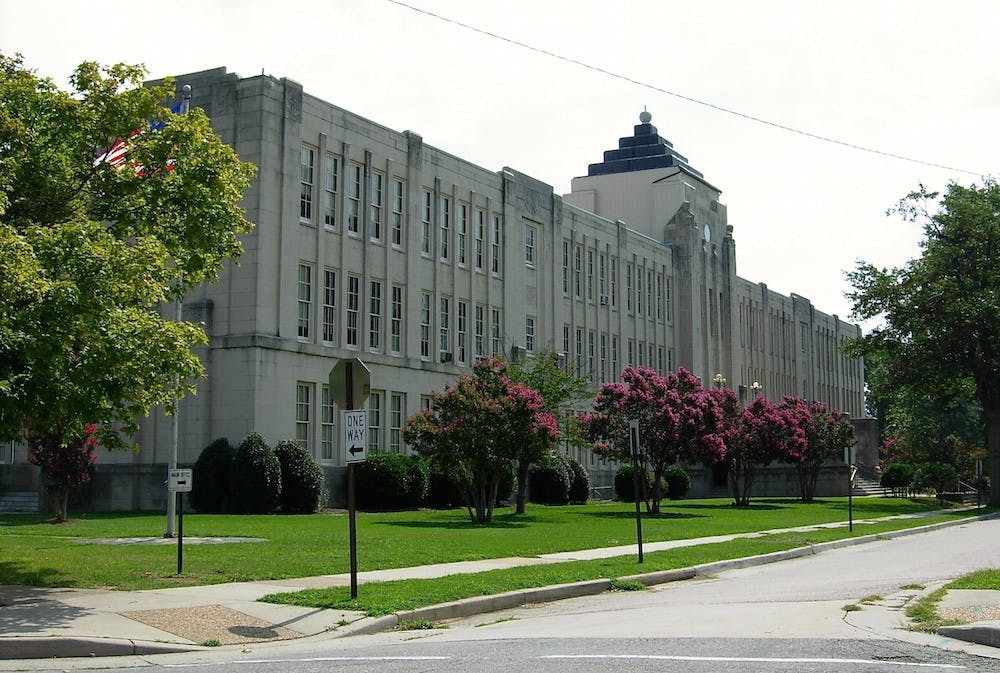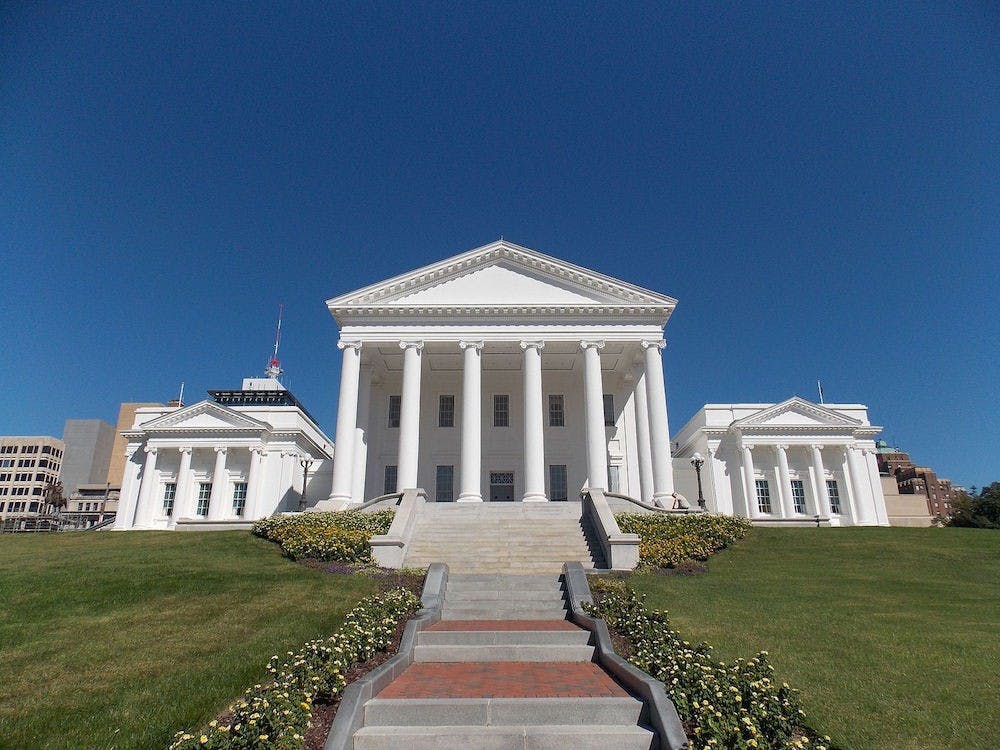School officials and parents continue to navigate challenges with contact tracing, quarantining and vaccinations this fall while many aspects of life returned to normal as the COVID-19 pandemic enters its third year.
Richmond Public Schools and Henrico County Public Schools returned to in-person instruction this year. Both divisions held most of the previous year online, with RPS reopening in-person in April and Henrico schools reopening in February.
RPS reported nearly 500 cases of COVID-19 among students, teachers, staff and volunteer partners among 54 schools from Sept. 8 to Dec. 2. HCPS reported over 1,300 cases among its 72 schools and annexes from Sept. 1 to Dec. 3.
All Virginia schools must require mask-wearing indoors, according to the Virginia Department of Education. Richmond and Henrico school divisions use social distancing, disinfection of high-touch areas and maintenance of air ventilation systems to prevent the spread of COVID-19, according to COVID-19 policy pages for both Richmond and Henrico school divisions.
Those who have come in close contact with COVID-19 must quarantine unless they are fully vaccinated, or have tested positive in the last three months and are asymptomatic, according to the RPS health and safety protocols.
The HCPS quarantine period for unvaccinated close contact is 10 days, and people can return to school sooner if they test negative five days after being exposed, according to an article from The Henrico Citizen. The Henrico Citizen also reported that fully vaccinated people generally do not have to quarantine.
Health officials worked closely with local public and private schools to reopen this fall, focusing on layered prevention strategies, said Cat Long, VDOH’s public information officer for Richmond and Henrico health districts.
These layered prevention strategies include having vaccinated adults in schools, vaccinating eligible children, hosting vaccine clinics, implementing mask mandates and social distancing in the classroom, Long said. Kids are also “podded” in classrooms to limit interactions and prevent outbreaks.
The pandemic is continuing to put stress on families, with in-person learning having imperfections just like virtual learning, Long said.
“We're aware that by asking kids to quarantine from school that we are putting a strain potentially on a family who might have an issue with accessing childcare in the last minute,” Long said.
Henrico parent Tom Nicholas has a second-grader and kindergartener attending school in-person at Lakeside Elementary School this year.
Nicholas and his wife had their second-grader attend school virtually last year, he said. He credited his family being able to endure the year to an “amazing” first grade teacher and his wife working part-time.
Enjoy what you're reading?
Signup for our newsletter
“Honestly, I don't know how we would have done it last year if she hadn't had that bandwidth,” Nicholas said.
Though, other parents are facing immense challenges as workplaces return to normal, Nicholas said.
“We’re not fully back to normal yet because our kids aren't vaccinated,” he said. “And so [parents of young children] still need some of that flexibility that we had last year.”
Earlier this year, an Indeed survey showed reopening of schools as a major factor when people who are looking for a job planned to begin working again.
Nicholas said he was overall pleased with Henrico’s policies despite wishing that parents were notified of contact tracing and illness policies before school started, he said.
His kindergartener had a positive case in his class earlier this fall, but Nicholas and his wife were not notified by the school because their child wasn’t considered a close enough contact — he sat on the other side of the classroom and wasn't near the student who tested positive at lunch that day.
It felt strange for Nicholas considering that with last year’s policies, they would have been notified, he said. Nicholas noted that he and his wife had only found out because their child mentioned how a few kids left in the middle of the day, and other parents later confirmed it was because of a COVID-19 case in the classroom.
Although vaccines were not yet available to children ages five to 11 when Nicholas spoke with The Collegian, he said that he and his wife would not hesitate to do so as soon as it had been cleared for their age group.
On Nov. 8, the CDC recommended the vaccination of children ages five to 11 following the FDA’s authorization earlier that month. As of Dec. 5, 15.1% of children in the city of Richmond received the first dose of their COVID-19 vaccine, and 18.9% of children in Henrico County received their first dose.
The Virginia Department of Health did not implement a vaccine mandate despite a petition pushing for one earlier this fall. The RPS school board removed disciplinary action from a vaccine mandate for school staff in November.
“Even if you don't hang out with children, getting vaccinated helps reduce the community transmission in the local area, which then impacts spread within the schools,” Long said.
To combat vaccine hesitancy, Long said the Richmond and Henrico health districts partnered with trusted local leaders and community members.
While the VDH opted against a mandate, it prioritized vaccine promotion, Joanna Pitts, schools health nurse consultant, said. School nurses worked with local health departments to offer vaccines on the weekends at different times to accommodate parents’ schedules.
There has been a higher rate of vaccination in clinics when the Richmond and Henrico Health Districts partner with faith communities, Long said, specifically pointing to Second Baptist and Sacred Heart churches in Southside.
The VDH also continued to update its COVID-19 policies and lift important resources for families, Pitts said. The department has featured Bridge to Resources on its Back to School page to help guide people to food pantries, medical care and other resources.
“People who might not have the baggage that we carry, frankly, as a governmental institution, as a healthcare institution, which are both institutions that have caused a lot of harm to communities, particularly lower-income communities of color,” Long said.
Other outreach strategies this fall included tabling at events and in high-traffic pedestrian areas, Long said. She also said that town halls have been used to allow people to ask questions in a safe, non-judgmental space.
As for Nicholas and his family, while they are not overly worried about their children catching and becoming severely ill from the virus, they still take precautions to avoid the virus and prevent its spread, he said.
Nicholas' kids are used to masking. When his 2-year-old began to mimic adults, he put a sock over his face as a mask while he was pretending to get dressed, he said. Back-to-school shopping in their household this year included buying superhero and Paw Patrol masks.
"It was an interesting twist on the whole back-to-school supply buying process," Nicholas said.
Contact international co-editor Eileen Pomeroy at eileen.pomeroy@richmond.edu.
Support independent student media
You can make a tax-deductible donation by clicking the button below, which takes you to our secure PayPal account. The page is set up to receive contributions in whatever amount you designate. We look forward to using the money we raise to further our mission of providing honest and accurate information to students, faculty, staff, alumni and others in the general public.
Donate Now



